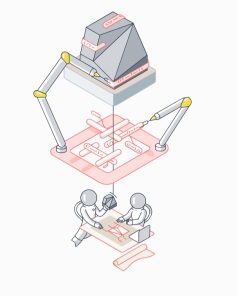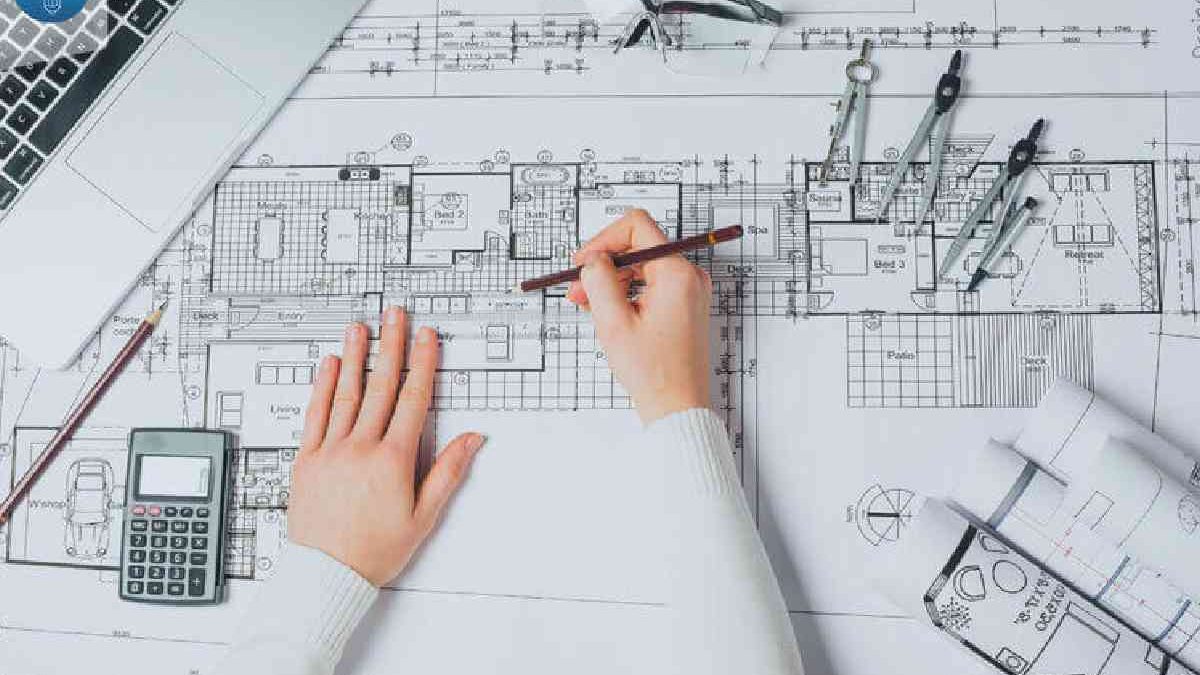Table of Contents
Introduction: The Evolution of AEC
The Evolution of Architecture, Engineering, and Construction (AEC) is a journey marked by technological advancements and changing philosophies. It has transitioned from manual drafting to Computer-Aided Design (CAD) and further to Building Information Modeling (BIM process automation). This digital transformation has streamlined design, construction, and maintenance processes, while also promoting sustainability. The AEC industry continues to evolve with emerging technologies like AI, robotics, and IoT, promising even greater innovation and efficiency.
The emergence of technology in the Architecture, Engineering, and Construction (AEC) industry marked a significant shift from traditional manual processes to digital tools. Initially, this integration involved the adoption of Computer-Aided Design (CAD) systems. These systems replaced manual drafting with digital drawings, allowing professionals to create, edit, and share designs more efficiently.
CAD’s introduction in the 1960s and its subsequent evolution streamlined the design process, reducing errors and enabling faster iterations. Architects and engineers could now create accurate 2D drawings on computers, leading to improved collaboration among design teams.
The integration of CAD also set the foundation for more advanced technologies in an AEC company like e-verse. As computers became more powerful and software more sophisticated, CAD evolved to include 3D modeling capabilities. This enabled professionals to create virtual 3D representations of buildings and structures, offering a clearer visualization of designs.
The Current State of Automation in AEC
Here’s a concise overview of some of the key tools and technologies currently being used in the Architecture, Engineering, and Construction industry.
- Building Information Modeling (BIM): Digital representation of building data and design, enhancing collaboration and project efficiency.
- 3D Modeling and Visualization: Software for creating and visualizing detailed 3D models, aiding design and communication.
- Virtual Reality (VR) and Augmented Reality (AR): Immersive technologies for experiencing designs and spaces virtually.
- Generative Design: Algorithm-driven design exploration for optimized solutions.
- Cloud-Based Collaboration Platforms: Online tools for real-time project collaboration and data sharing.
- Construction Management Software: Solutions for project scheduling, budgeting, and resource management.
- Reality Capture (Laser Scanning, Drones): Technologies for capturing real-world environments as digital models.
- Energy Analysis and Simulation Software: Tools for evaluating building energy performance and efficiency.
- Prefabrication and Modular Construction: Off-site construction techniques for faster and cost-effective building assembly.
- Artificial Intelligence (AI) and Machine Learning: Algorithms for predictive analytics, quality control, and risk assessment.
- Internet of Things (IoT): Networked devices for data collection and management in smart buildings.
- Robotics and Automation: Automation of construction tasks, improving precision and efficiency.
- Digital Twins: Virtual replicas for real-time monitoring and optimization of built environments.
These technologies collectively enhance collaboration, efficiency, sustainability, and innovation across the AEC industry.
How these tools are changing the way architects and engineers work
The tools and technologies in the AEC industry are fundamentally changing how architects and engineers work:
- Collaboration: Real-time data sharing via BIM and cloud platforms enhances teamwork and reduces errors.
- Design: 3D modeling and generative design accelerate creative exploration and decision-making.
- Visualization: VR and AR enable immersive design experiences, aiding understanding and communication.
- Data-Informed Decisions: BIM and analysis software provide insights for sustainable and efficient designs.
- Construction: Management tools optimize scheduling and resource allocation, reducing delays.
- Accuracy: Reality capture tech ensures precise as-built models and quality control.
- Remote Work: Cloud tools facilitate remote collaboration, overcoming geographic barriers.
- Prefabrication: Designs are tailored for efficient off-site construction, saving time.
- Predictive Insights: AI predicts project outcomes, aiding problem prevention and design optimization.
- Facility Management: Digital twins and IoT allow real-time monitoring and maintenance.
- Safety: Robotics automate hazardous tasks, improving worker safety.
- Client Engagement: Visualization tools enhance communication and client understanding.
Design and Planning Automation:
Design and planning automation employs technology to streamline and accelerate design and planning processes in the AEC industry. It involves tools like generative design, parametric modeling, and algorithms to quickly explore options, optimize layouts, analyze environmental factors, ensure code compliance, and automate documentation. This approach boosts efficiency, reduces errors, enhances collaboration, and enables more sustainable and innovative design outcomes.
Construction Automation:
Construction automation refers to the utilization of technology, robotics, and digital systems to automate and enhance various aspects of the construction process in the Architecture, Engineering, and Construction (AEC) industry. It aims to increase efficiency, accuracy, safety, and productivity throughout the construction lifecycle. Here’s a concise overview of construction automation:
- Robotic Construction: Robots are employed for tasks such as bricklaying, concrete pouring, and even assembling prefabricated components. These robots can work with high precision, speed, and consistency, reducing labor-intensive tasks and minimizing errors.
- 3D Printing: Additive manufacturing techniques, like 3D printing, are used to create building components, structures, and even entire buildings. This technology enables rapid construction, design freedom, and reduced material waste.
- Prefabrication and Modular Construction: Automated assembly lines are used to manufacture building components off-site. These components are then transported and assembled on-site, leading to faster construction and improved quality control.
- Drones: They are utilized for surveying, site inspections, and progress monitoring. They provide accurate visual data, aiding in project management and ensuring compliance with design plans.
- Construction Management Software: Automated software tools help manage schedules, track resources, monitor progress, and facilitate communication among project teams. This improves project coordination and reduces delays.
- IoT and Smart Construction: Internet of Things (IoT) devices are embedded in construction sites to monitor equipment usage, worker safety, and site conditions in real time. This data enhances decision-making and reduces risks.
- Automated Material Handling: Automated vehicles and equipment are used to transport and distribute materials on construction sites, reducing manual labor and increasing efficiency.
- Wearable Technology: Workers wear sensors and devices that monitor their health, movement, and safety. This data helps prevent accidents and ensures worker well-being.
- Site Safety: Automation tools include safety systems that can detect hazards, control access to dangerous areas, and alert workers to potential risks.
- Construction Robotics: These specialized robots perform tasks such as welding, cutting, and concrete finishing, improving speed and precision.
- Construction Documentation and Reporting: Automated systems generate real-time progress reports, reducing paperwork and improving transparency.
- Quality Control: Automation tools monitor and analyze construction processes, ensuring compliance with design standards and regulations.
Construction automation enhances project efficiency, reduces labor costs, improves worker safety, and accelerates project delivery. However, while automation offers numerous benefits, human expertise remains vital for decision-making, problem-solving, and managing complex construction projects effectively.
Project Management and Coordination
Project management and coordination in the Architecture, Engineering, and Construction (AEC) industry involve the strategic planning, organization, and oversight of all aspects of a construction project. This includes managing resources, schedules, budgets, communication, and collaboration among various stakeholders. Here’s a brief overview of project management and coordination in the AEC industry:
- Project Planning: This involves defining project goals, scope, objectives, and timelines. It includes outlining tasks, milestones, and resource requirements.
- Resource Allocation: Efficiently assigning human resources, equipment, materials, and finances to various project tasks to ensure optimal utilization and timely completion.
- Scheduling: Creating detailed project schedules that outline when tasks will be performed, allowing for effective coordination and avoiding delays.
- Budget Management: Monitoring and controlling project expenses to ensure that they align with the allocated budget. Effective cost management helps prevent overspending.
- Risk Management: Identifying potential risks that could impact the project’s success and developing strategies to mitigate or address these risks.
- Communication: Facilitating clear and timely communication among project stakeholders, including architects, engineers, contractors, clients, and regulatory authorities.
- Collaboration: Encouraging collaboration among multidisciplinary teams to ensure that design, construction, and other project elements are aligned and integrated.
- Document Management: Organizing and maintaining project documentation, including drawings, contracts, permits, and reports, to ensure accurate record-keeping.
- Change Management: Managing changes that occur during the project, assessing their impact on scope, schedule, and budget, and implementing necessary adjustments.
- Progress Monitoring: Regularly tracking project progress against the established schedule, identifying any deviations, and taking corrective actions if needed.
- Quality Control: Ensuring that project deliverables meet established quality standards and specifications. This involves inspections, testing, and verification.
- Client Relationship Management: Maintaining open lines of communication with clients, addressing their concerns, and keeping them informed about project developments.
- Software Tools: Utilizing project management software that helps in planning, scheduling, resource allocation, and collaboration among team members.
- Performance Metrics: Establishing key performance indicators (KPIs) to measure project success, such as on-time delivery, cost efficiency, and client satisfaction.
Effective project management and coordination are essential for delivering successful AEC projects on time, within budget, and to the desired quality standards. These processes ensure that all stakeholders work together efficiently, minimizing risks, maximizing resources, and achieving the project’s objectives.

